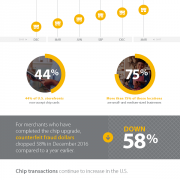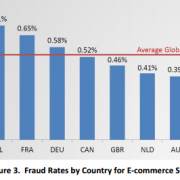Contactless Fraud Scare? Not So Fast.
Breathless reports point to a terrifying increase in U.K. contactless fraud. Dig a little deeper, however, and the story changes.
Breathless reports point to a terrifying increase in U.K. contactless fraud. Dig a little deeper, however, and the story changes.
All payment providers and merchants grasp the dynamic nature of fraud. But fraud prevention requires more than the latest software and security protections—it requires active collaboration. Here’s why.
U.S. EMV use has hit a milestone. Visa said that for the first time, the number of Visa chip card transactions topped 1 billion last month, a 330 percent increase from March 2016. The announcement comes as the payment network reported a 42 percent overall increase in processed transactions in its 2017 fiscal second quarter.
Criminals have deepened their focus on U.S. online transactions since the country’s October 2015 EMV liability shift, with card-not-present fraud expected to hit $6.4 billion in 2018, according to a new report from the U.S. Payments Forum. The expected total would represent a 23 percent increase from fraud losses in 2017, and a 68 percent increase from 2016.
An analysis of a real fraud situation shows that some barriers to fraud can potentially drive away valuable customers. Here’s what to do—and not to do—when criminals target your cards.
The U.K.’s Financial Conduct Authority has fined Deutsche Bank £163 million (US$204.7 million) for failing to maintain adequate anti-money laundering controls between Jan. 1, 2012, and Dec. 31, 2015, according to Paybefore sister publication Banking Technology.





